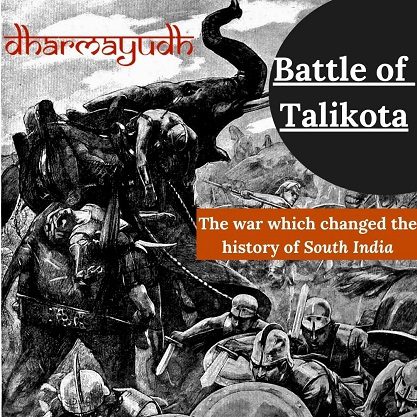The great Vijayanagara Empire of South India audaciously fought against the neighboring sultanates since its formation. Leaders like the great and undefeated Krishnadevaraya crushed every wave of invasion and shielded southern India from disintegration.
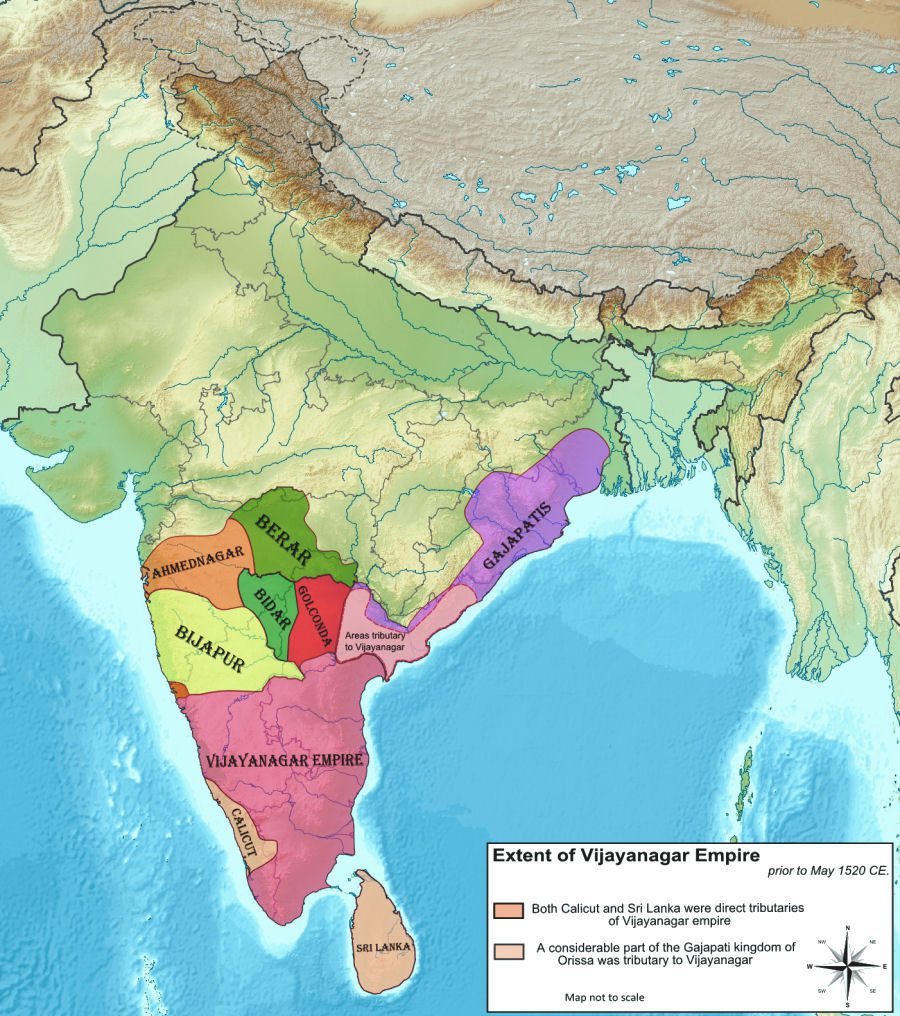
The empire (Vijayanagara) itself emerged as the protectors of people, especially the natives i.e. Hindus. Under them, the region flourished tremendously in the field of art, architecture, literature, military tactics, etc.
But the golden days of this superb kingdom ended with the Battle of Talikota (Rakshasi-Tangadi). The battle itself was a bloody war in which a total of 4 sultanates (mainly Golkonda, Ahmadnagar, Bidar, and Bijapur) united to finish the lone but bold Hindu empire of Vijayanagara.
The battle resulted in the downfall of the great Hindu empire, which fought for their country for centuries.
Content
Background
At the time of the battle of Talikota, the leader of the Vijayanagara Empire was Rama Raya. Although he (Rama Raya) was not the ruler of the kingdom but acted as the regent of king Sadashiva Raya.
Rama Raya was a cunning, bold, visionary, and arrogant leader who wanted power. His brilliant military tactics were displayed when he faced Ibrahim Qutub Shah. He was also a great patron of literature and during his time many Sanskrit and Telugu writers flourished in the kingdom.
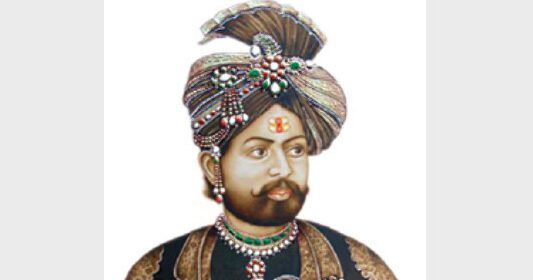
He also tried to use the different Sultanates of Deccan against one another for his own benefit. For example, Rama Raya initially took the side of Ali Adil shah and launched a campaign against Ahmednagar Sultanate.
Later the Sultanate of Ahmednagar and Golkonda decided to bring Rama Raya on their side to finish Ali Adil Shah.
Due to this Rama Raya launched an assault on Raichur doab in support of Golkonda and Ahmednagar. When the sultans realized the true intention of Rama Raya they formed a confederacy against the former and his empire.
It is also pertinent to note that the sultans of Golkonda and Ahemadnagar felt insecure about the growing prowess of the mighty Vijayanagar Empire under the leadership of Rama Raya.
The Battle of Talikota (13 January 1565): Judgement Day
The combined forces of Bijapur, Golconda, Bidar, and Ahmednagar then marched to invade the kingdom of Vijayanagara. The invading confederacy (Husain Nizam ul Mulk, Adil khan Qutub ul Mulk, and Malik Barid) arrived at Talikota and then moved towards the north bank of the Krishna River at Tangadgi.
At the same time, the Vijayanagara’s army reached and took possession of the south bank of the river Krishna. Seeing the Vijayanagara army on the other side the sultanate’s confederacy decided to force a deceptive move and marched eastward to cross the river.
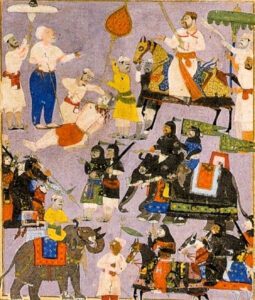
They detached a strong contingent of their army backward to cross the river. The plan was successful and the invading army saved their precious time.
The two armies then stood face to face to finish their century’s old rivalry once and for all. It is believed that the confederacy of Sultanates had a strength of 50000 cavalry, 3000 infantry, artillery support, elephant, and 8000 Turkish horsemen.
On the other hand, the Hindu army had a strength of 60,000 cavalry and a huge infantry which increased their strength to about one lakh.
The battle began at noon with both sides launching artillery attacks. After that, the flanks of the Vijayanagar army charged the battlefield. The charge was led by Venkatadri from the right side and Tirumal on the left side.
The battle was bloody and ruthless. The left wing of the Sultanate crumbled and retreated back. While the right-wing continued to fight gallantly. Both sides suffered heavy losses. It is believed that the Hindu army in this conflict retreated back.
Furthermore, now the Muslim army sent their strongest military arm in the battle. Their center which consisted of Turkish horsemen and horse archers charged the central arm of the Hindu army.
The Hindus fought audaciously and forced the Sultanate confederacy to retreat. But this retreat was deception as the Muslims wanted to bring them close to their artillery’s range.
As soon as the Hindus came close to the range of Nizam Shah’s artillery Rumi Khan ruthlessly carried out a series of bombardments on the Hindu troops.
The result of this attack was successful and resulted in heavy casualties for the Vijayanagar army.
At last, the Vijayanagar army led a final attack to finish the battle. Ram Raya who was old but brave enough to lead this attack ordered his men to charge the vanguard of the Muslim army.
The battle was ruthless and confusion erupt as nothing was visible in a cloud of dust. In this confusion, it is believed that the Muslim army surrounded Ram Raja and captured him.
The leader of the Hindu army was brought in front of Hussain Khan who ordered to behead the Hindu leader.
Note: According to Caesar Frederick, the course of the battle was changed due to the betrayal of the Muslim troop who served the Vijayanagara army. Furthermore, it is also believed that Ali Adil shah who presented himself as a neutral secretly attacked the Rama Raya’s army in the middle of the battle. The Hindu army was not prepared for this assault and was caught by surprise and lost the war.
Aftermath
After this victory, the victorious army marched towards the capital of the Vijayanagara empire i.e. Hampi. It was a situation of total chaos and misery.
The help and rich city were unprotected as their heroes who fought audaciously fell on the battlefield. The invading army plundered and decimated every structure, temple, village, and wealth.
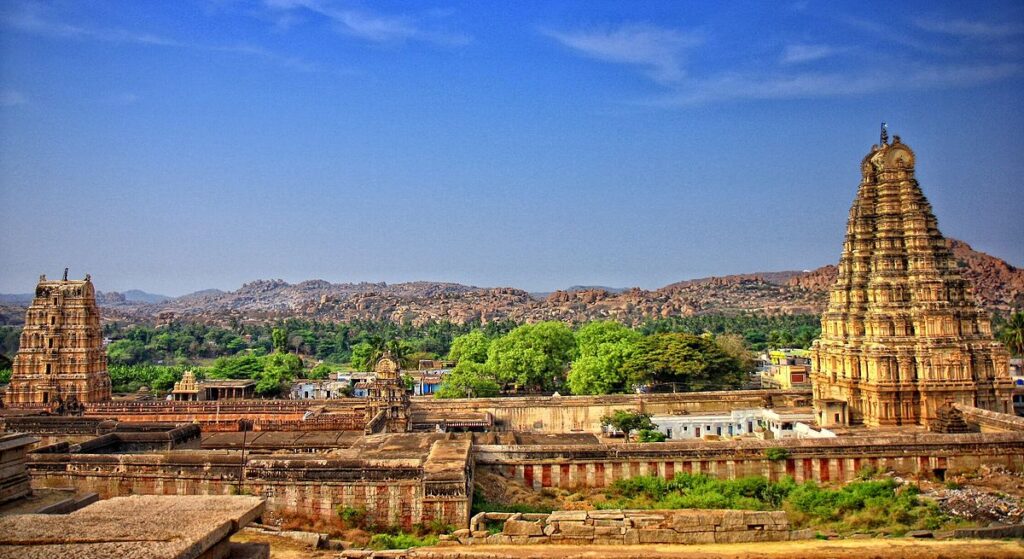
It is believed that this plundering and loot continued for about six months due to which the golden city of Hampi could not rise again. The city and kingdom which were known for their richness were reduced to wasteland.
While many portray the battle of Talikota as an achievement of the Deccani sultanates we should not forget the sacrifice of countless Hindus who fought with rare bravery for their land and people
Donate to our Cause
If you support what we are doing and would like to contribute to help us grow and reach more Indians to teach them more about such forgotten historic Indian Heroes and stories, please consider donating any amount. It will help us grow

